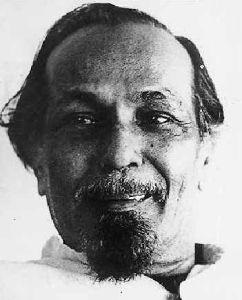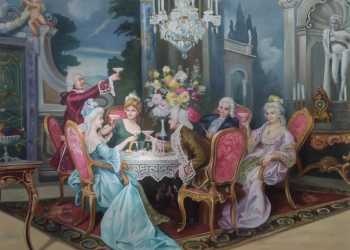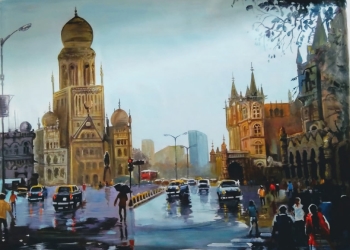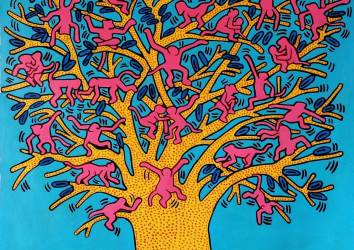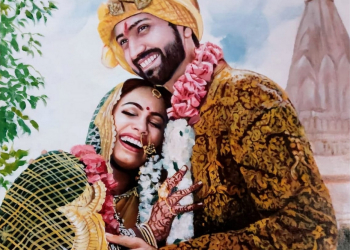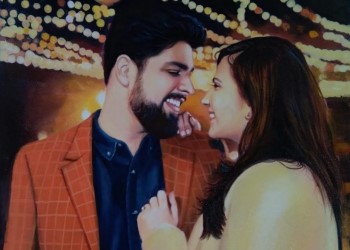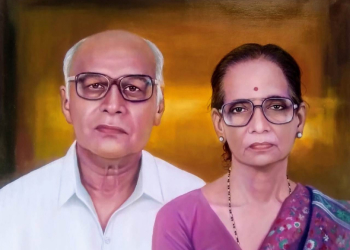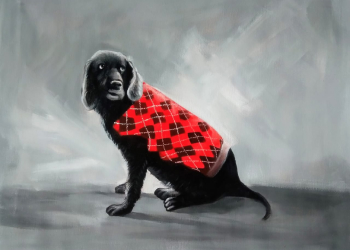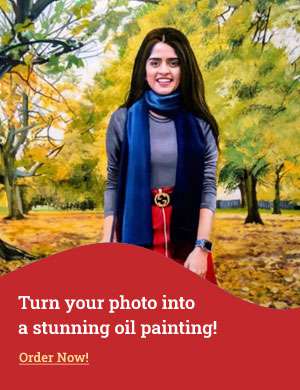Introduction
The late KCS Paniker was a man with many talents. A mere mortal can only hope to play one or two roles in their lives, whereas he played multiple roles with confidence and poise. He was an educationist, institutional builder, artist, painter, visionary, and leader.
Born in Tamil Nadu in 1911, Kovalezhi Cheeramputhoor Sankara Paniker was educated in Tamil Nadu and Kerala. He pursued his interest in arts and joined the Progressive Artist Association in Madras (Chennai) later he joined the same college. He founded the Progressive Arts School Madras in 1944. He was appointed as the Vice Principle of his college in 1955 and in 1957 he was appointed as the Principle. After his retirement from his position, he went on to found The Cholamandal Artist Village, the largest artist commune with all the facilities including a gallery in India and perhaps Asia.
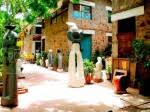 Cholamandal Artist Village
Cholamandal Artist Village
But his greatest talent was in his contribution to the field of arts and paintings. An accomplished artist and painter he held many exhibitions in India and around the world where his work was highly appreciated.
According to noted art critic Parab Ranjan Ray,”Only a handful of artists would adapt a Western Modernist linguistic mode after being convinced about the adaptability of particular language for objectifying his/her subjective appraisal of the experienced reality, K C S Paniker undoubtedly was one of those rare exceptions in the late forties and early fifties.”
But his greatest achievement was his work on the ‘Words and Symbols’ series of paintings. His exploration of the calligraphic styles and the creation of fluid designs led him to traditional horoscope scrolls, which combine calligraphers' lines with carefully made geometric symbols interspersed with figural images to create grand dynamic designs. As Parab Ranjan Ray puts it, “This grand cognitive sweep encompassing the conception of art as mark-making to construction of signifiers, to conceiving of images, albeit ignoring altogether the representational function of art, makes KCS Paniker a modernist artist with a difference. So different and authentic are these paintings from anything that preceded in Modernist western and in modern Indian art and even from what Paniker himself had done before, and yet they are so rooted in rationale of creativity, that we should not have any hesitation of remembering and honoring Paniker for the ‘Words and Symbols’ series of paintings, if not for anything else. Paniker’s lasting contribution to modernist art has been this project of holistic integration of the primordial with the most sophisticated. Thus was born an ‘abstract art’ which was neither born out of post-Renaissance rationalism nor out of post-industrial revolution triumphalism.”
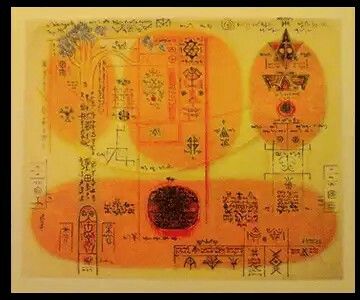 A painting from the Words and Symbols series by KCS Paniker
A painting from the Words and Symbols series by KCS Paniker
Handmade Art Reproductions & Landscape Paintings
A timeline of Life and Achievements of artist and painter KCS Paniker (1911 – 1977)
1911 – Born on 31st May in Coimbatore, Tamilnadu, India.
1917 – 1930 – Formal education in Kerala and Tamilnadu.
1936 – 1940 – Art education at the Govt. School of Arts, Madras.
1941 – Appointed as a teacher in the same school
1944 – 1953 – Establishment of the Progressive Painters’ Association, Madras. Exhibition of paintings at Madras, Bombay, Calcutta, New Delhi and London. Awards for merit.
1954 – Nominated as one of the Nine Eminent Artists and Member of Executive Board of the Lalit Kala Akademi, New Delhi by the Ministry of Education, Govt. Of India. Travel in England, France, Switzerland and Italy. One man exhibitions Of paintings at the India House, London, Paris and Lille.
1955 – 1958 - Appointed Vice-Principal, Govt. School of Arts and Crafts, Madras in 1955 and Principal in 1957. Participation in National Exhibition as well as in exhibitions of Indian art abroad. One- man exhibition in Madras.
1959 – Extensive travel in the USSR and talks on Indian Art in Moscow, Leningrad and Kiev.
1961 – Exhibition of paintings at the VI Bineal de São Paulo, Brazil.
1962 – Participation in the Indian Art Exhibition in Mexico, upgrading of the Government Colleges of Arts and Crafts.
1963 – Member, Indian Delegation, World Art Congress, New York. Extensive travel in the USA and discussions with American artists as a guest of the State Department of the USA.
1964 – 1967 – Participation in the Tokyo International Exhibition, the Festival Hall Exhibition, London (1965), and the Venice Biennale, 1967. National Award for painting.
Retirement in 1967 from the principal ship of the Govt. College of Arts and Crafts, Madras. Establishment of Cholamandal Artists’ Village, Madras in 1966.
1968 – 1976 – Participation in the exhibitions of art as well as in the I, II and III Triennale of World Art, India.
1976 – Elected Fellow of the Lalit Kala Akademi.
1977 – Died, Madras, 15th January.
Artist K G Subra manyan on KCS Paniker
I met Panicker sometime in 1942. It was by a surprising coincidence. I was in those days a student in the Presidency College, Madras, and a kind of student activist. Rather sour with things around I used to divert myself with paintings and scribbling and some of these paintings and scribbles found their way to Panicker’s hands through a common friend. These apparently roused his enthusiasm and he showed them to D.P. Roychoudhury, then principal of the Madras School of Art who, in his turn, sent me a dramatic invitation to join the School as his special student. I did not do so for various reasons, and, in any case, that is an old story. The incident comes back to me now that Panicker is no more. For it shows the man to a certain extent; for him, art was a consuming passion and anyone in the field, irrespective of who he was, was his immediate friend. And he went very much out of the way to befriend him. It is this enthusiasm that made him the central hub of a large corpus of art activity in Madras in the fifties and the sixties and, later, the mentor and motivator of his incredible dream child, the Cholamandal Artist Village.
Order Your Portrait Painting from Photo today!
When I first met Panicker I was a newcomer to the field of art and he was already a respected teacher in the school, next in status only to Roychoudhury. But that did not stand in our way. There was no reserve in the meeting; he showed his work to me and discussed art with me as if we were old friends. He was at that time quite a virtuoso. His watercolors and gouaches, interweaving the lights and shadows of palm groves, had a freshness of touch that could surprise both expert and novice. His drawings had a kind of bottled excitement in them and combined to that a great professional competence. He bounced around the enthusiasm, his eyes sparkled at everything he saw, the people, the landscape, the common facts of the Madras street and his response to these was always earnest and direct. I did finally end up in an art school two years later (though in Shantiniketan and not in Madras). I sometimes wonder whether meeting Panicker had something to do with it. Anyway, we always met thereafter whenever I was in Madras, though this was not very often. I always enjoyed the meeting and, I suppose, so did he; we went over a variety of topics, on art, on literature and the like. Panicker’s interests were large, which was fair among the artists of his time, and he was remarkably articulate. We discussed his work and mine, though there was not much of mine to discuss at that time; and I had a periodical glimpse of what he was going through at that time.
In the late forties Panicker was trying hard to slough off his virtuosity. With it he probably felt like he was still wearing the school blazers. He was trying to start afresh, keeping in front of him a kind of Van Goghian ideal, a direct expressive response to things around. His work took on a simpler image; his palette brightened up and the linearity of forms became pronounced. Not much later he made a trip to England, visiting Europe on the way. His western excursion affected him like it affected most Indian artists of any individuality; it threw him back to himself. It was as if across the seas a strange longing for his land caught him in the pit of his stomach. On his return he became a committed indigenist, though not in the traditionalist sense. And it started him on a new road. What he has done since is now known to a lot of people. At first his painting featured voluptuous human forms in rambling line, which metamorphosed slowly into wriggling foetal specters and later uncoiled into rhythmic lines and squiggles, moving in stages from a writhing human landscape into a microbial street of linear romanticism. They became less rolled out an intriguing carpet of colour fields and calligraphic texture, with a distant visual reference to our old manuscript scrolls.
Panicker’s role in the art world of Madras was a decisive one. He was the first person who contributed much to bring the South Indian artist out of his crisis of self-confidence. His infectious enthusiasm worked like leaven in the youth. He helped them, organized them, fought their cause on national forums to the chagrin of many. But his role in the Indian Art world is even more illustrious; he led a generation of young artists to look into themselves and their surroundings; if it led some to these into certain preciosities it was not his fault. He made them think about art in a larger perspective; the artists’ village he founded in Cholamandal is a lasting proof of this. To persuade young artists to call off their dependence on commercial galleries and live in a kind of commune, living and working together, sharing their successes and failure, practicing art in a larger spectrum is a remarkable achievement; not only is the concept elevating, in the realities of our art situation it is a pragmatic one too. The survival of this village intact, with the same spirit and perspective, will be a living monument to his vision.
Order Your Custom Handmade Oil Portrait Painting from Photo today
KCS Paniker’s views on art
Why do I paint?
I myself do not know precisely why I paint. Apart from a general ill-defined knowledge of the impulses behind my other activities I have had no exact assessment of these. However, from my childhood days, ever since consciousness dawned on me, what has haunted by imagination throughout was a sense of some deficiency, and a sense of inferiority. I had yet another awareness; that if I had been alone; if there were no one to see what I was doing, I would be able to do something beyond the capacity of most. This helped me to land into many scrapes. Though my tales about my imaginary daredevilry were made fun of by other children, the elders listened to these amusedly. And they used to ask me to repeat such tales. However, I used to feel that I had never succeeded appreciably in this diversion. And I used to wonder why. But, I was helpless to remedy it. With the narration of such tales, I used to gather some sort of self-confidence. And I had nothing else to do. It was at this time that another youngster joined the school, the Madras Christian College School. Though he had been only eleven years old, he was gifted with the ebullient skill of executing drawings and paintings in simple style. He helped to open my eyes. But, on sensing his invaluable innate gift, I used to feel bewildered. I began to draw the pictures of villages and coconut groves which I had been familiar with, in my village in Kerala. Canals used to make me highly emotional. And my eyes used at such times to fill with tears. Feelings that this was unmanly, I was at pains to hide the tears from others quickly wiping them off. I began to paint continuously from then onwards. Initially, these depicted canals, coconut groves, and paddy fields. And this work could be done alone, without the supervision of anyone else. And I could get immersed in such work. And it was much better than spinning out heroic tales. It used to give me similar self-confidence and was of equal attractiveness.
At this stage, painting had been a source of joy. I had no serious worry. I began to gain strength steadily to reach a well-defined goal. It was at this time that the goal itself was challenged. And I began to feel that the heaven which I had built for my own self was transient and insubstantial. And when I woke from my dream I felt sure of one thing- I had to build a new different world. This shifting of goals occurred at least four times during my career. Though the goal kept changing, the emotional response from painting remained constant.
Ravi Varma, Lady Pentland, Cotman, Brangwyn, Van Gogh, Gaugin, Mattisse, Fauves etc., came and went, one after the other, in a series of influences. Sometimes I used to be under the influence of many such, simultaneously. But, during the early 1950s I began to feel dissatisfied with the Western influence which had been my mainstay. From then on, between 1953 and ’63, I was under the influence of a combination of Ajantha and Van Gogh. This was the period during which it dawned on me that I would be able to contribute something at sometime or other to the art of our country. But, I had to complete quite a lot of work before attaining this goal. And the art movement in Western countries was going ahead rapidly. I was aware, early enough, that unless one was able to grasp and assimilate the fundamentals of Western modern art it would not be possible to contribute anything worthwhile to the art of our country. I used to hear a lot about Paul Klee even then. Egyptian pictures and hieroglyphics influenced him considerably. It was Paul Klee who roused plenty of hopes in me. Paul Klee who roused plenty of hopes in me. Paul Klee is closer to our art than Picasso or Braque. His lines are simple and full of life.
Once again, the little world which I had built, tumbled down round my ears. After learning the lessons imparted by Klee, I was at a loss how to commence work on the basis of these, from scratch. I did not like to copy him. It would be an insult to my Guru. I had to begin from the beginning, like any beginner. The past was found equally to be a help as well as a hindrance in this new venture. I was inspired and at the same time cast down. Suddenly, one day I happened to notice a page from the maths notebook of a young student. Arabic figures, Latin and other symbols of Algebra and Mathematics and the linear and other formations of Geometry, all helped to rouse in me a new idea. I had been familiar with these in the past. But, only as a student of Maths. But now these opened our vista of creative art. With renewed ardour I plunged into the new phase, in 1963. By the time my lines had begun to assume the essence of words and symbols.
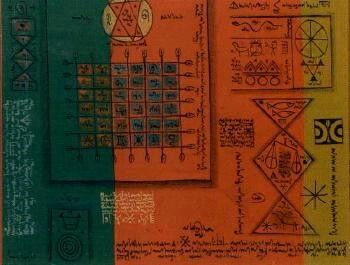 A painting from the Words and Symbols series by KCS Paniker
A painting from the Words and Symbols series by KCS Paniker
As my interest turned more and more into traditional Indian symbols, astrological charts and astrological tomes I began to discard the Roman letters which I had used in the beginning and began to adopt the Malayalam script which was more acceptable to me.
It was much later that I came across Tantric art. Somehow, these failed to have any impact on my creative impulse. The symbols which I use now are not symbols of anything in particular. Even most of the alphabets are those fashioned by me.
Malayalam script remains only, every partially, as Malayalam letters. Mostly these are indecipherable signs which resemble letters. I have used these only to provide visual effects to the picture.
Conclusion
Undoubtedly KCS Paniker was one of the greatest painters India has ever produced. At a time when most of his contemporaries were adopting Western art movements referred to as Modernism and trying to apply them to Indian contexts without considering Indian art heritage, civilizational values, and aesthetic sensibilities, his paintings were anchored in Indian roots and inspiration.
About Us:
Paintphotographs.com is India's leading custom art platform. We turn your favorite photos, pics, and images into luxurious handmade portrait paintings. Our work includes handmade portraits, custom oil reproductions, charcoal drawings, and sketches. As a team of accomplished artists, we use museum-quality canvas, best international brands of colors such as Winsor & Newton and Daler Rawney. We work with various mediums, including oil, acrylic, mixed media, graphite, and charcoal.
To order a custom handmade oil portrait painting you can visit our order now page. You can order custom Wedding Paintings, Couple Paintings, Memorial Paintings, Family Paintings, Baby portraits and Children Paintings, Photo to paintings, and Pet Portrait Paintings from Photo.
You can visit our pricing page to know the prices of our portrait paintings. To connect with us ping us on our chat messenger on the website, ping us on WhatsApp, call us at 918291070650, or drop us an email at support@paintphotographs.com
You can visit our gallery pages to see our work. We make single portrait paintings, couple paintings, memorial paintings, Kids and Baby Portrait paintings, God & Religious Paintings, Old Photo to Paintings, Wedding couple Paintings & Marriage Portraits, Family Paintings, Pet Portrait Paintings, Radha Krishna Paintings, Oil Portraits of Gurus, Saints & Holy Men, Charcoal and Pencil Sketches, Custom Landscape & Cityscape paintings, Contemporary Art Reproduction & Replica Paintings, Old Master Reproduction & Replica Art, Monochrome and Black & White portrait paintings, Historical Portraits and Shivaji Maharaj Paintings, Celebrity & Political Leaders Portraits. We can also merge separate photos to create a single seamless painting called Composite portraits to add deceased loved ones to make a family oil portrait as though they were present.
Our custom handmade portraits make beautiful Anniversary Gifts, Engagement Gifts, Birthday Gifts, Retirement Gifts, Housewarming Gifts, Mother's Day gifts, and luxurious gifts for many important occasions.
Paintphotographs.com provides bespoke services for art patrons, interior designers, and architects. It helps you create the perfect pieces for residential and commercial projects and serves as a platform for artists to showcase their work.
If you are an art aficionado interested in writing a guest post on art, connect with us.
For sources referenced in the article, please refer to the Notes and Reference section.
Like this story? Then you will love our podcasts on Spotify. Listen to our deep dives and fascinating stories from the art world.
Join our nearly 20,000-strong community on Facebook, WhatsApp, and X.
Want to see our art? Join our community of 500,000+ subscribers on the Paintphotographs YouTube channel, Instagram, and Pinterest for some amazing art pics & art videos!
Recommended Pieces
India's Greatest Portrait Painters: Lives of 13 Oil Portrait Painting Masters | Paintphotographs
Ultimate 20 Best Oil Portrait Paintings of John Singer Sargent (Ranked) | Paintphotographs
The Artistic Genius of Abanindranath Tagore: Rediscovering His Early Works | Paintphotographs
Why is the Monalisa so famous? Monalisa's portrait painting history | Paintphotographs
Memorial Paintings - The Ultimate Guide to Commissioning one | Paintphotographs
Photorealism: The Art of making a painting from a photo. | Paintphotographs
How to choose the best size for your portrait painting and wall art: A guide | Paintphotographs
Notes & reference section
K.C.S. Paniker, originally written in Malayalam. Sameeksha Quarterly, no.16, July-September, 1971 [as noted by Panikkar, 2003, 119], also in Chitram Ezhuthu: a publication on art and letters, March 1979, 19-20. Tr. Ramji.
Kerala Celebrity - K C S Paniker
Profile - KCS Paniker: His art and his times - Padma Jayaraj

